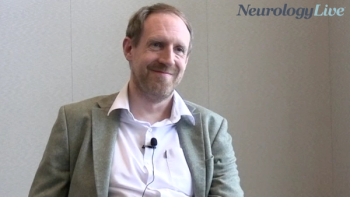
Recognizing Sleep Disorders in Patients
Advanced practice practitioners share tools they use in their clinics to diagnose sleep disorders.
Episodes in this series

Wendy L. Wright, DNP, ANP-BC, FNP-BC, FAANP, FAAN, FNAP: Let’s talk about how we ascertain if a patient has a sleep disorder. Do you have a particular line of questioning that you use?
Debra Davis, CRNP: I don’t necessarily have a line of questioning. I do know that there are sleep questionnaires, the Insomnia Severity Index, and other scores. But as I’ve looked at those, they’re very subjective. And if you really want to know, you’ve got to do the plethysmography, you have to do the study. And I’m so glad about your doing the in-home study, because that’s what I’ve always done. I used to, 20 years ago, send people for in-hospital studies, but the patients just weren’t comfortable. They would come back, and they would have so many complaints. Having in-home studies has just revolutionized the sleep apnea world.
There are a lot of different companies that you can go with now, and I just love that. I love the fact that patients can stay at home, they can be tested themselves, and then I get the results and we go over them together. So, there’s not a specific form that I fill out or questions that I ask. It’s just, if you’re led down that by fatigue or whatever the complaint was, then I go from there to: “Hey, your Mallampati score is bad. You say you’re snoring, you’re tired, let’s get a sleep study, and then we’ll know.” I’ve been wrong before. I’ve had normal sleep studies, but the only way to know is to test and see.
Wendy L. Wright, DNP, ANP-BC, FNP-BC, FAANP, FAAN, FNAP: I’m going to talk about the questioning that I use in the clinic. And I will often say to people, “so how do you think you sleep?” That usually opens up the door. “I’m a good sleeper.” If they say, “I’m not a good sleeper,” I’ll say: “Tell me what you mean by that. Are you having trouble falling asleep, staying asleep, waking up too early, or all of the above? What’s going on?” And then they’ll usually give me that. I like to know if it’s difficulty falling or staying asleep because we know that there are certain medicines that work better for maintenance than they do for onset, and vice versa. But then I take it a step further and I say, “are you unhappy with your sleep?” And last, “are you impaired by it?”
I saw another person today who said: “I wake up 2 times a night, and then I go back to sleep. I feel fine the next day. It doesn’t bother me.” Then that’s not someone I’m going to go down any road and treat. You know what I’m going to do with them? I’m going to educate them that people do wake up in the night. That as we get older there is more fragmentation to our sleep. That that is a normal sleep cycle, and that most people don’t go to bed and do not move all night. That’s what people want, but that’s very unusual. I think a lot of what we can do is just ask the simple questions: “Are you having difficulty with your sleep; how many hours a night are you getting; do you have trouble falling asleep, staying asleep, or waking up too early; are you unhappy with your sleep?” And those questions really can get the answers, can get you going down a path that you need to go down in order to be able to treat them.
Debra Davis, CRNP: And what I like about those 4 questions was that they’re very yes-no answers. You don’t have to go down a huge rabbit trail. You just say, “yes, I’m satisfied.” “No, I’m not.” You don’t have to get into a big why. No is no, and let’s figure out how we can get you to yes.
Wendy L. Wright, DNP, ANP-BC, FNP-BC, FAANP, FAAN, FNAP: I think a lot of our role is to really educate people that 7 to 8 hours of sleep a night is a good amount of sleep. That 30 minutes to fall asleep or less is an appropriate amount of time. And ideally, if we can have people asleep 85% of the time that they’re in bed that’s considered an ideal percent of sleep as well. A lot of what I like to do is educate them that it’s not unusual to wake up, and that’s OK as long as you’re feeling OK the next day.
I think I asked this, and you talked about the Insomnia Severity Index, but it sounds like you just mainly do some of the questioning that I do, rather than relying, per se, on a particular sleep tool.
Debra Davis, CRNP: I do. Because so many times when people are really having insomnia, everything’s a 10, this is a 10, this is a 10, “this is the worst thing that’s ever happened to me” because they’re not sleeping. Whereas if it’s more conversational you can say: “That’s kind of normal for people to get up once or twice a night. What the problem would be is if you stay awake for an hour, for 2 hours,” anything like that. I would rather it be a conversation than a piece of paper that they fill out.
Wendy L. Wright, DNP, ANP-BC, FNP-BC, FAANP, FAAN, FNAP: And if there are folks that are listening tonight, another tool that I found really helpful is called the BEARS, B-E-A-R-S, and B stands for, “do you have bedtime problems,” i.e., falling asleep? E stands for, “are you excessively drowsy during the day?” A, “do you awaken during the night?” R, “do you have regularity of your sleep? Are you able to go to bed at the usual time and the duration of your sleep?” And then S stands for sleep disorder breathing. Just trying to get at the apnea. We’ve built the BEARS questionnaire into our EHR [electronic health record system], so if people want a quick reminder of how to ask about sleep, that may be a tool that the folks who are listening tonight can use as well.
Debra Davis, CRNP: That’s good.
Wendy L. Wright, DNP, ANP-BC, FNP-BC, FAANP, FAAN, FNAP: Do you think our colleagues address sleep any more than any other profession?
Debra Davis, CRNP: Do you mean nurse practitioners in general?
Wendy L. Wright, DNP, ANP-BC, FNP-BC, FAANP, FAAN, FNAP: Nurse practitioners and physician assistants.
Debra Davis, CRNP: We are looked at as the profession that spends more time with the patient. So, it does allow for that extra attention, because so many times it’s: “I’m here for a refill of my medicines, I just need this and this and this, and I’m out the door.” And yay, then you’re ready for the next person. But if you just need this and this and this, and then you say: “Is everything else OK?” One of the things that I always do before I leave the room, I may put my hand on the door, but I turn back to the patient and I say: “Did I answer everything, did I answer all your questions?” And a lot of times it’s: “I did have one more thing I wanted to talk to you about.” And often that can be sleep, it can be other things, but it can be sleep. And so that’s how I do it. I can only speak to what I do in my practice, in the way that I do things, yes, I do believe that. That’s not to dis anybody or to say someone doesn’t spend the proper amount of time with a patient. It’s just, yes, that’s what I do.
Wendy L. Wright, DNP, ANP-BC, FNP-BC, FAANP, FAAN, FNAP: Awesome.
Transcript edited for clarity
Newsletter
Keep your finger on the pulse of neurology—subscribe to NeurologyLive for expert interviews, new data, and breakthrough treatment updates.























